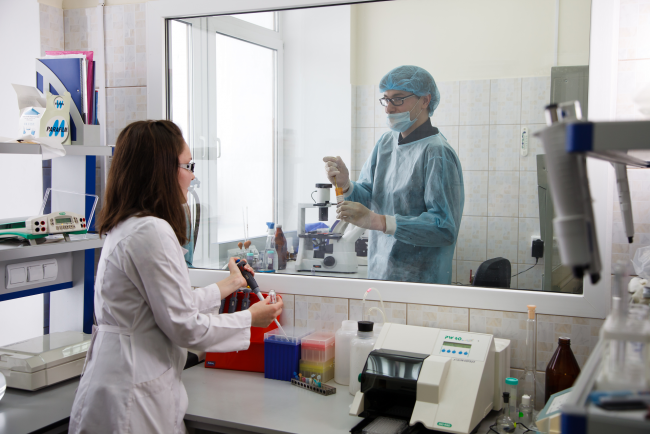Researchers from Vyatka State University are studying the mechanisms of interaction of pathogenic microbes with human immunity factors at the molecular level. The results of the research, they note, will contribute to the improvement of the means and methods for diagnosing, preventing and treating a number of dangerous infectious diseases. The latest results of the work are published in the European Biophysics Journal.
To study the mechanisms of interaction of pathogens with human immunity factors, the authors applied a new approach that allows recording the strength of the interaction of an individual bacterial cell with monoclonal antibodies using optical tweezers.
Its work is based on the principle of a laser trap: with a special distribution of radiation power, a laser beam falling on microscopic particles captures them and makes it possible to manipulate them. Such a setup, in particular, makes it possible to move single cells in a liquid medium over a fixed distance.
When a bacterial cell captured by a laser is brought to a solid substrate with antibodies "sewn" to it, a bond is formed between them. When the cell is taken back, this connection is broken - we observe a sharp jump in the photodetector signal. Our program analyzes this data, fixing the strength of intermolecular interaction, - Andrey Byvalov, professor of the Department of Biotechnology at Vyatka State University, said.
According to him, scientists used a similar approach to determine the significance of a particular bacterial antigen in the adhesion of a microbe to antibodies or human cells. In the latter case, human cells are fixed on a substrate, and instead of a bacterial cell, a microsphere is captured by a laser beam, previously coated with an antigen of interest to the researcher, which is isolated from microbial biomass.
A decrease in the strength of the bond in such a model system or the "bacterium–human cell" system after the introduction of any drugs into it may indicate the prospects for the development of anti-adhesive medicines based on them in this relatively new direction in the fight against bacterial infections. In general, the results of such research will contribute to the creation or improvement of new tools and methods for diagnosing, preventing and treating certain infectious diseases, — noted Byvalov.
According to the researchers, optical tweezers are widely used in various branches of biology to study processes in living cells: the synthesis of nucleic acids, proteins, the work of enzymes, flagella, and cell transport. Now the same principle has been applied to study the initial stages of the interaction of bacteria with human cells.
A team of researchers from the Vyatka State University (Vyatka State University) and the Institute of Physiology of the Komi Scientific Center of the Ural Branch of the Russian Academy of Sciences plans to continue studying the interaction of Yersinia bacterial antigens with the surface of living mammalian cells. They also conduct trial studies of the mechanisms of motility of enterobacteria.
The work was carried out by scientists of the Vyatka State University with the support of the Presidential Grant MK-3383.2021.1.4 for young Russian scientists - Candidates of Sciences and RFBR grant No. 20-34-90013.

